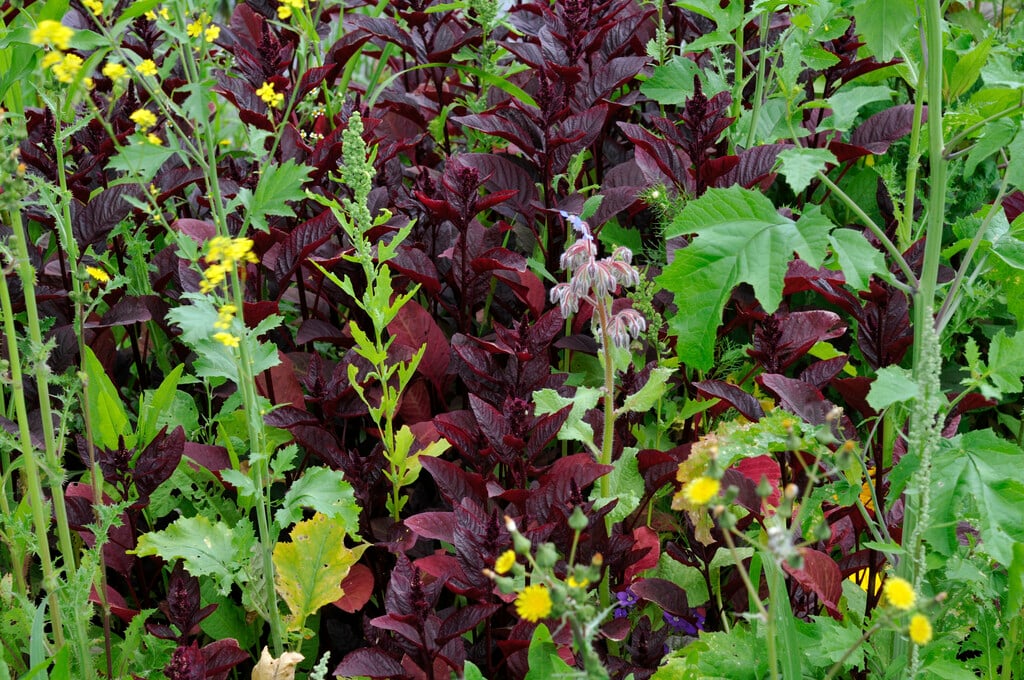Amaranthus hybridus
pilewort
An annual plant with an upright growth habit and flower spikes. Green stems, leaves and flowers can be tinged with red colouring. Flowers are produced in summer and autumn. Seeds provide food for birds

Size
Ultimate height
1–1.5 metresTime to ultimate height
1 yearUltimate spread
0.1–0.5 metresGrowing conditions
Moisture
Moist but well–drained, Well–drainedpH
Acid, Alkaline, NeutralColour & scent
| Stem | Flower | Foliage | Fruit | |
| Spring | Green Red | |||
|---|---|---|---|---|
| Summer | Green Red | Green Red | ||
| Autumn | Green Red | Green Red | ||
| Winter |
Position
- Full sun
Aspect
South–facing or West–facing
Exposure
ShelteredDrought resistance
Yes Hardiness
H2Botanical details
- Family
- Amaranthaceae
- Native to GB / Ireland
- No
- Foliage
- Deciduous
- Habit
- Bushy, Columnar upright
- Genus
Amaranthus can be upright or spreading annuals or short-lived perennials, with simple leaves and tiny flowers borne in dense, erect or pendulous, catkin-like inflorescences in summer and autumn
- Name status
Unresolved
How to grow
Cultivation
Seeds can be sown direct or started in pots or trays indoors in spring. Grow in moist, fertile, humus-rich soil in full sun, in a sheltered site. Can self-seed
Propagation
Propagate by seed
Suggested planting locations and garden types
- Cottage and informal garden
- Wildlife gardens
- Bedding
- Cut flowers
- Flower borders and beds
Pruning
Pinch out main stem to encourage branching. Cut down after flowering
Pests
May be susceptible to aphids
Diseases
May be susceptible to a virus
Get involved
The Royal Horticultural Society is the UK’s leading gardening charity. We aim to enrich everyone’s life through plants, and make the UK a greener and more beautiful place.